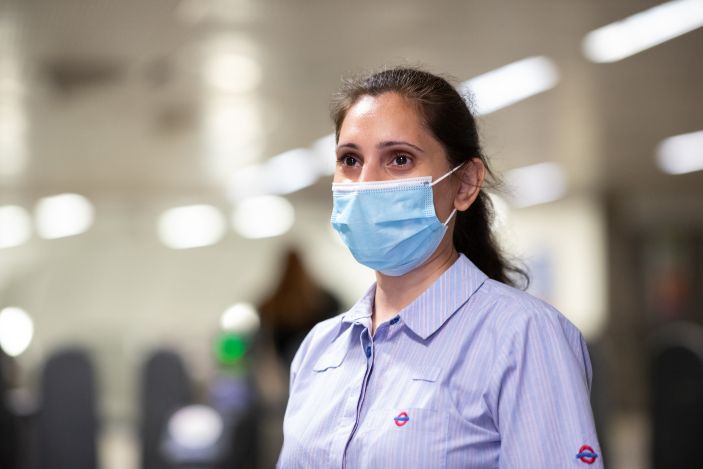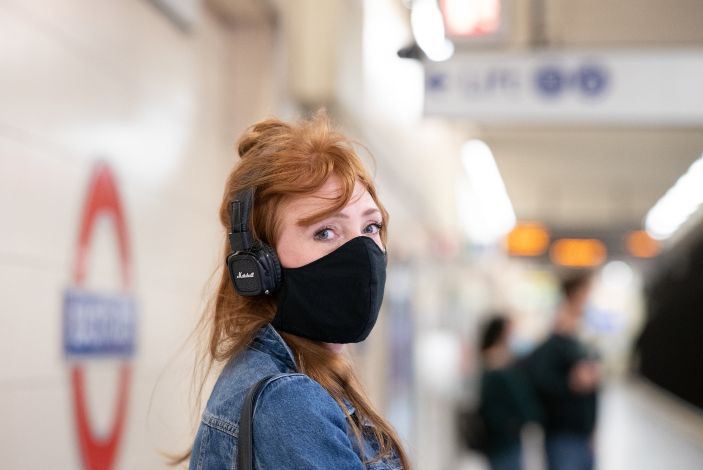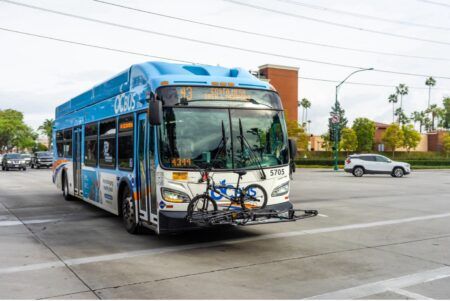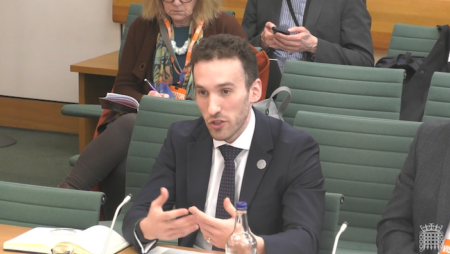Today, the UK Government is lifting many of the Covid restrictions that have been in place across England for many months, including the requirement to wear face masks on public transport. However, Transport for London (TfL) is reminding customers that they will continue to be required to wear a face covering on TfL services for the duration of their journey unless they are exempt. This covers London underground, London buses, London trams, DLR, London overground and TfL rail. The exemptions that exist under the current regulations will remain unchanged.
Customers not wearing a face covering may be refused entry or asked to leave the network. TfL’s specially trained enforcement officers, who patrol the transport network to ensure customers and colleagues remain safe, will continue to run targeted operations. TfL’s frontline staff at gate lines and bus drivers will also continue to remind people that face coverings are a requirement. The Metropolitan Police Service (MPS) and British Transport Police (BTP) will continue to provide a visible presence on the TfL network to deter crime and antisocial behaviour.
TfL also expects and recommends the continued use of face coverings in taxis and private hire vehicles by both drivers and passengers unless they are exempt.
Frontline TfL staff will also continue to wear face coverings unless they are exempt or are working in non-public facing areas.

Keeping journeys safe
Research carried out by YouGov shows that 68% of people support the retention of face coverings on public transport at this point in the pandemic and that face coverings play an important role in giving people confidence to use public transport. TfL customer research from 2 May to 29 May 2021 shows that 86% of customers say they are wearing face coverings at all times on TfL public transport services. Of the 14% not wearing a face covering at all times or not at all, almost three-quarters (75%) have an exemption or good reason under the regulations for not doing so.
Customers returning to transport are encouraged to plan ahead, travel during the quieter times and walk and cycle where possible. A near-normal service continues across the public transport network and a wide range of active travel options are available, including Santander Cycles and protected cycling and walking routes, especially in central London and the West End.
Public transport is no less safe than any other similar setting. Independent testing by Imperial College has been carried out regularly since September, taking swabs of touch points and air samples in trains, stations and buses, and has found no traces of coronavirus on the public transport system.
During the pandemic, TfL introduced a wide range of additional measures to ensure that the network is cleaner than ever, including an enhanced cleaning regime using hospital-grade substances. More than 1,000 hand sanitiser points and more than 200 UV light devices on escalators handrails that continually kill bacteria and viruses are also keeping customers safe across the network.
Ventilation has been monitored and improved on the whole network to cut the risk of virus transmission. Buses have been modified to keep windows propped open and have also been fitted with a range of air extraction and ventilation systems. These systems, in conjunction with open windows and frequent opening of doors, ensure that fresh air circulates throughout the vehicle. Train and bus doors opening frequently ensures a regular exchange of air across the public transport network, while the constant movement of trains draws fresh air into the system. In the deeper Tube lines, ventilation shafts and fans supplement this air movement.

More people are now returning to public transport, with Tube ridership at around 40-45% of pre-pandemic levels and bus ridership at around 60-65%. Confidence in travel has also risen, with 60% of people overall and 76% of people who have travelled in the last seven days saying they were confident doing so.
The latest service information is available online and through TfL travel tools, including the free TfL Go app. This free app provides real-time train times and information in a mobile-friendly way to enable customers travelling on Tube, bus and rail services across London to choose the easiest ways to get around, including the quieter times to travel. Recently, it has been updated to provide real-time information on how busy a London Underground station currently is, using aggregated and depersonalised data from TfL’s wifi network. The app also provides detailed accessibility data and can also suggest walking and cycling options.
“I would like to thank the vast majority of people using our services who have followed the rules and helped control the virus and keep each other, and our staff, safe,” says Andy Byford, London’s Transport Commissioner. “I urge everyone to continue to follow the advice and requirements, including to wear face coverings while traveling on our network, so that we can continue to build confidence, and get back to the many wonderful things about London that we have missed during the pandemic.”





